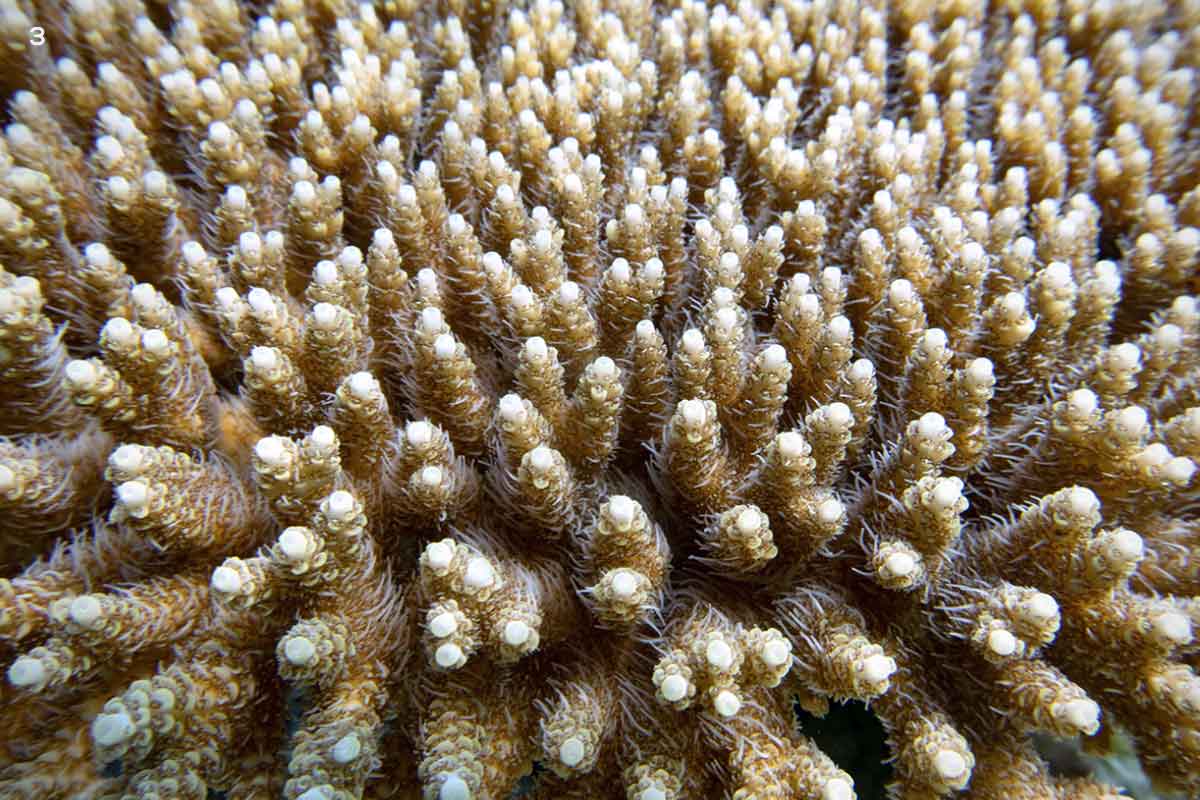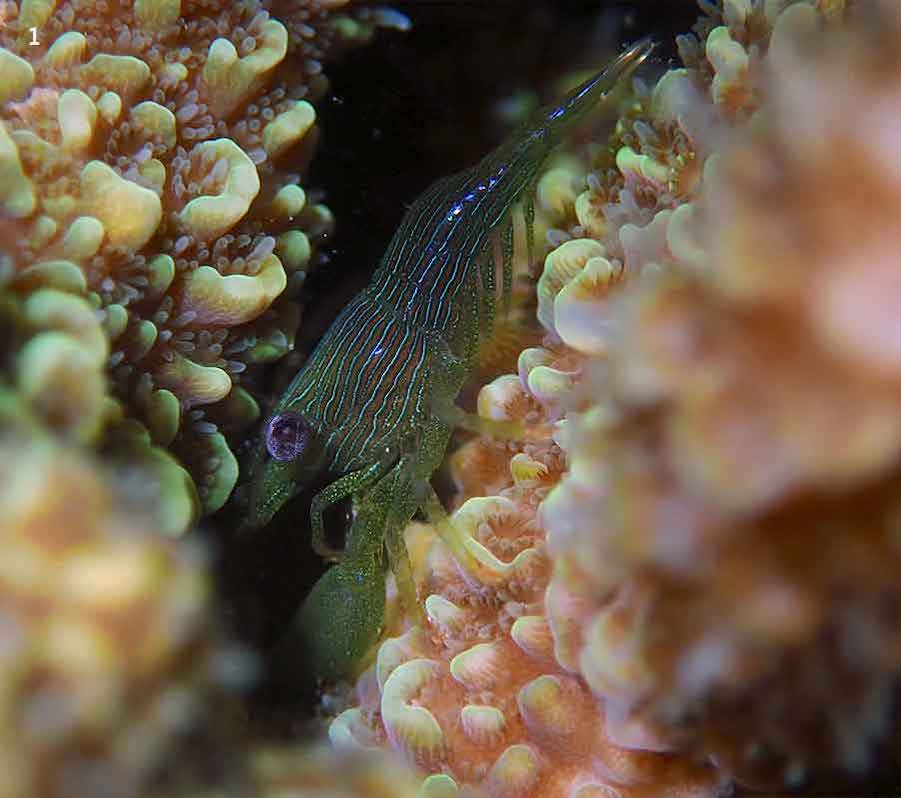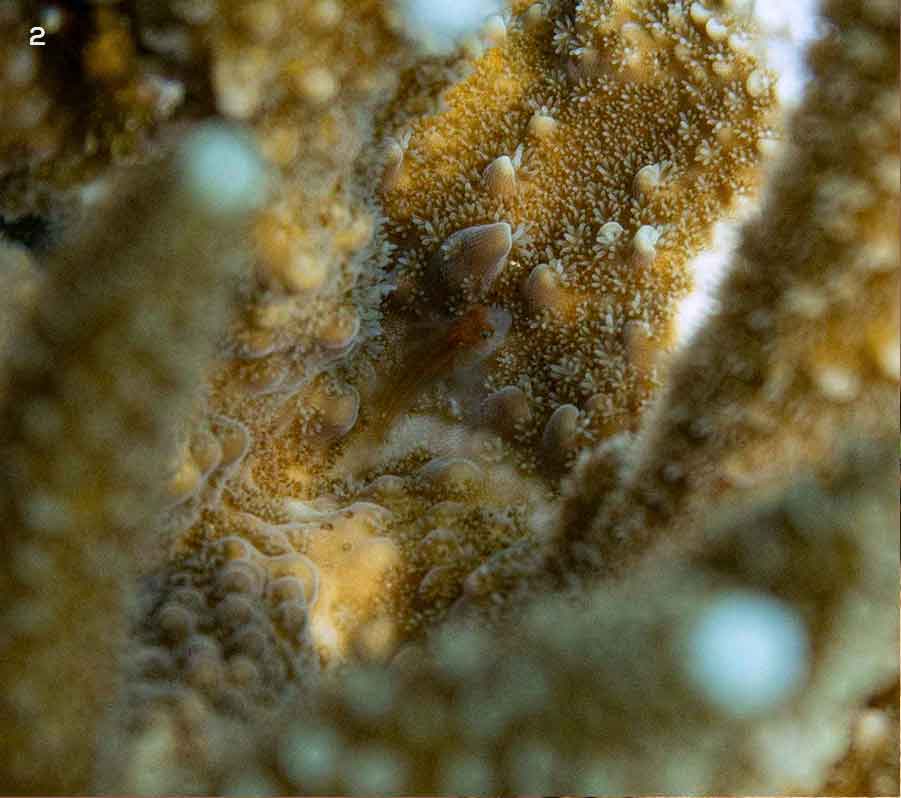 Listen to this article
•
15:34 min
Listen to this article
•
15:34 min
The Lakshadweep archipelago is a group of 12 atolls located just off India’s west coast. These atolls are coral islands in the truest sense. They formed as remnants of ancient volcanoes that erupted, later sunk into the sea, and began growing a ring of coral that juts out of the ocean’s surface. Sand was gradually deposited within this ring, creating small islands. What remains in the ring is the lagoon — an expanse of shallow ocean water, often not more than 3-4 metres deep, that stays protected from the fickle and tempestuous waves of the open ocean.
These lagoons shine a dazzling turquoise blue in the mid-day sun, providing a rather striking contrast to the deep cobalt blue of the outer reef and the open ocean beyond it. Folk tales from Lakshadweep speak of how the islands were formed when a saint threw his turquoise beads into the sea, creating the lagoons and the islands within them. But even the beauty of the lagoon’s waters cannot hold a candle to what lies within, for just under the ocean swell lies an impressive patchwork of habitats, each brimming with life. Chief among them are the Acroporid reefs.
Acropora is a genus of coral found on tropical coral reefs all across the world. They include some of the fastest-growing coral species. Their complex structure and rapid growth led them to evolve close ties with other species in the reef — more than most other coral species. Besides providing food and shelter to a variety of reef fauna, they have their own personal algal chefs and shrimp bodyguards. They also help create underwater farms and shape the species around them. Let’s explore some of the spaces where Acropora truly dominates: the lagoons of Lakshadweep.
Besides providing shelter, Acropora also serves as a nutritious mouthful of polyps. It comes as no surprise then that you will find several coral predators hovering around and moving between their branches. (1) The crown-of-thorns starfish (Acanthaster planci), a voracious coral predator, can digest over 400 sq cm of live coral in a day, sometimes devastating entire reefs in the process. (2) Parrotfish such as the humphead parrotfish (Bolbometopon muricatum) are equipped with strong, beaked jaws, which they use to bite through and ingest entire branches of coral, skeleton and all. They digest the coral and algae while also pulverizing the calcium carbonate skeleton to create white sand beaches. Photos: Vardhan Patankar
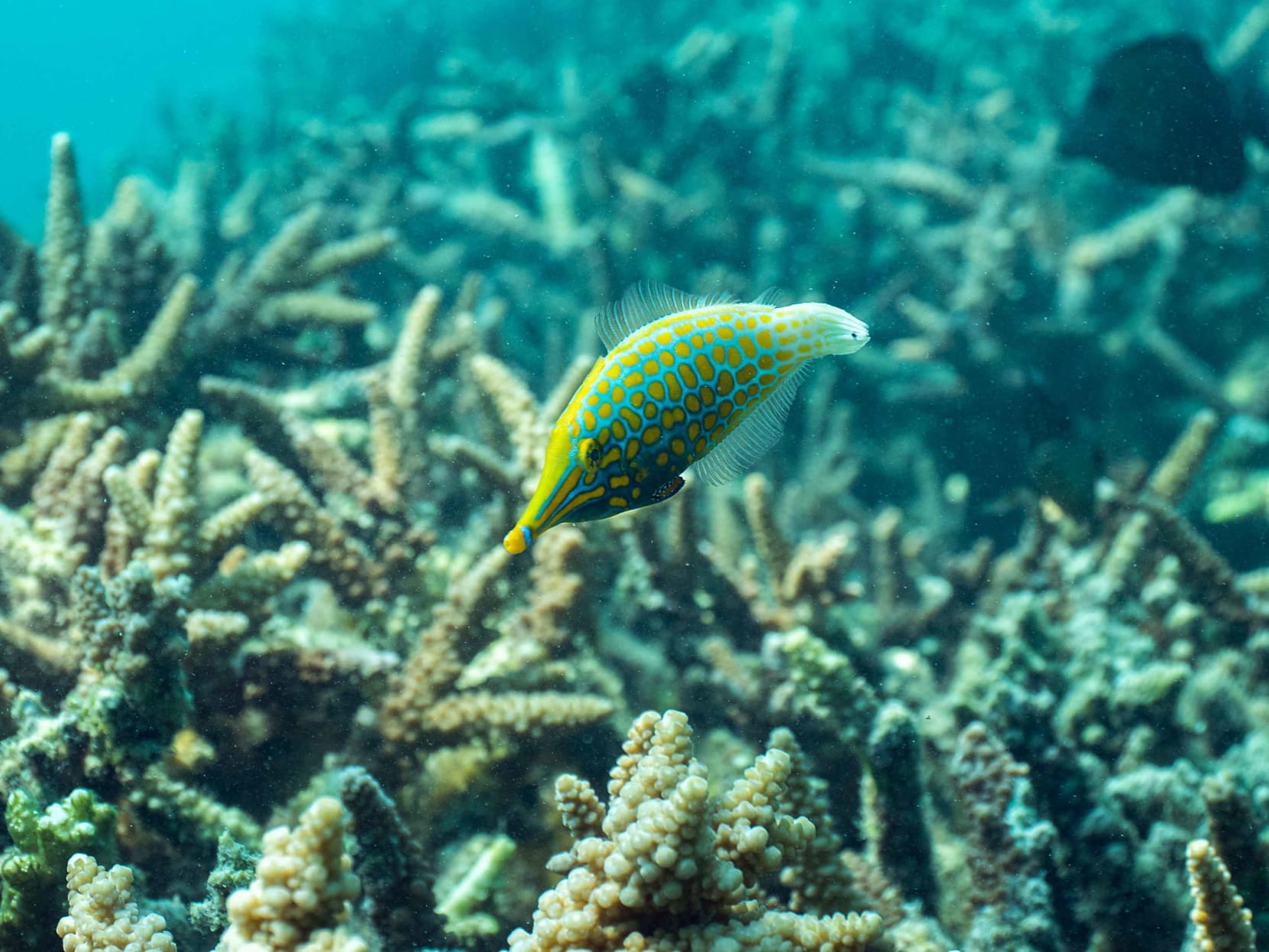
Harlequin filefish take it a step further. These fish move through the reef in pairs and feed almost exclusively on Acropora polyps, making them especially abundant in lagoon reefs. Their pale turquoise blue bodies, covered in a contrasting spatter of bright orange spots, provide the perfect camouflage as they skirt between coral branches. What’s more fascinating, though, is that by feeding on the coral polyps, they also take on the smell of the coral, thus outwitting predators that rely on a keen sense of smell. Photo: Umeed Mistry
Take a closer look at a single coral head, and you’ll see more movement deep within the colony’s branches. (1) Machine-gun coral shrimp (Coralliocaris graminea) have co-evolved with branching corals to form mutually beneficial relationships over time. They seek shelter within its branches but, in return, also defend the coral from potential predators like crown-of-thorns starfish with their strong snapping arms.
(2) Certain species of coral gobies (Gobiodon sp.) help defend Acropora from a more sedentary competitor — algae. When the toxins of the macroalgae Chlorodesmis destroy coral polyps, the resulting chemicals attract coral gobies to the Acropora. Gobies eat the toxic algae, thus preventing it from growing and killing the coral. In doing so, gobies also produce a toxic mucus secretion from their skin, driving away corallivorous fish that might want to snack on the Acropora’s polyps. A win-win! Photos: Evan Nazareth (1), Wenzel Pinto (2)
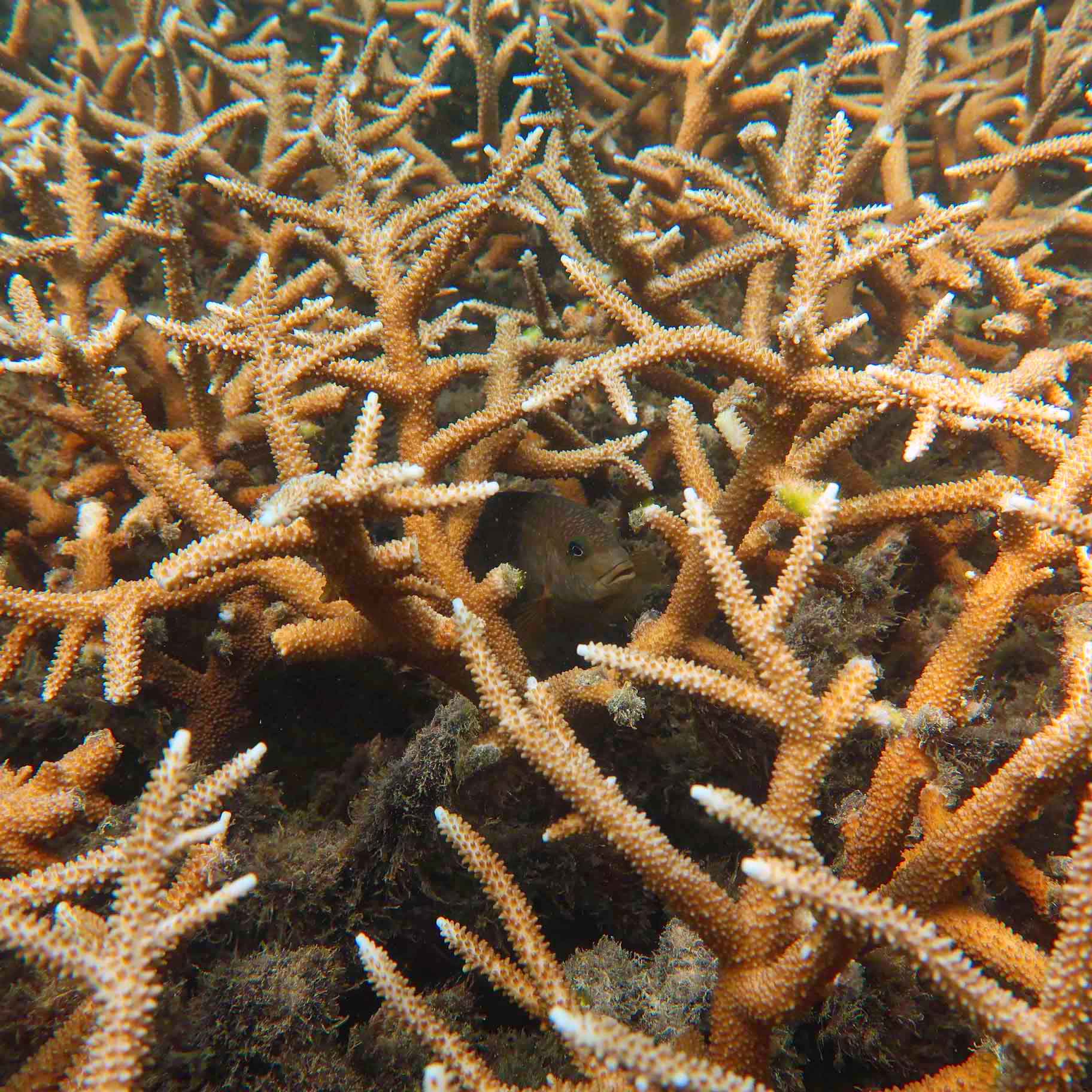
As you marvel at the critters within the coral, a rather grouchy fish called damselfish may attack you. Damselfish (Stegastes spp.) are the farmers of the reef. They farm an algal garden near the bases of large Acropora coral heads. Like any good farmer, they engage in a routine process of de-weeding, removing any unwanted species of algae. The garden acts as feed for an invertebrate microcosm, and this non-veg salad ends up as the damselfish’s food. Daily gardening requirements also entail pest control, which they perform by clacking their teeth and aggressively chasing away other herbivores that might try to munch on their garden. Photo: Wenzel Pinto
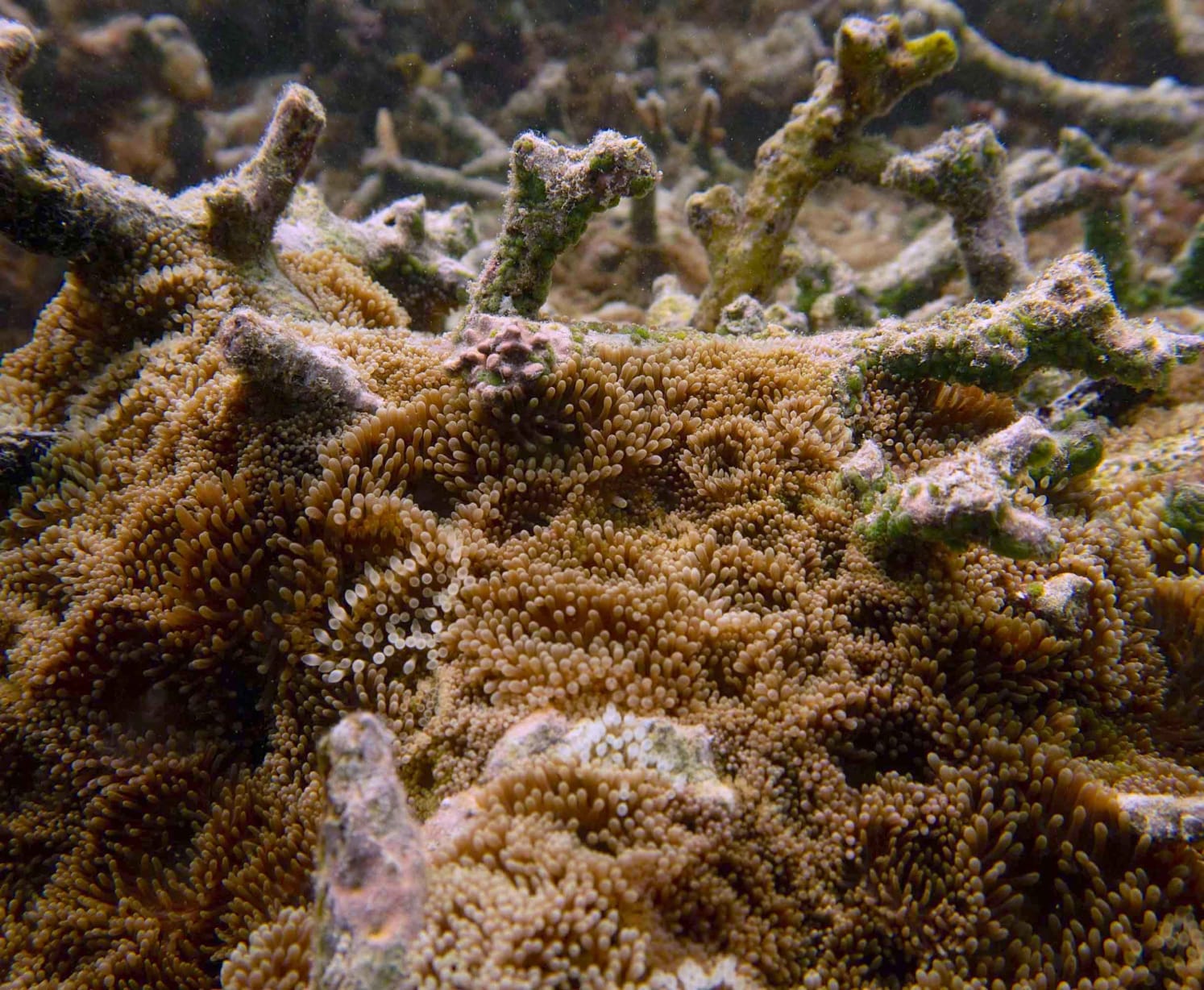
The act of farming works out in the interests of damselfish and algae but results in the death of some coral branches. It is from the ashes of their dead branches that new life is born. Acropora’s skeletal calcium carbonate remains provide a stable, sheltered base for other sedentary species, like this sea anemone (Mesactinia ganensis). Photo: Wenzel Pinto
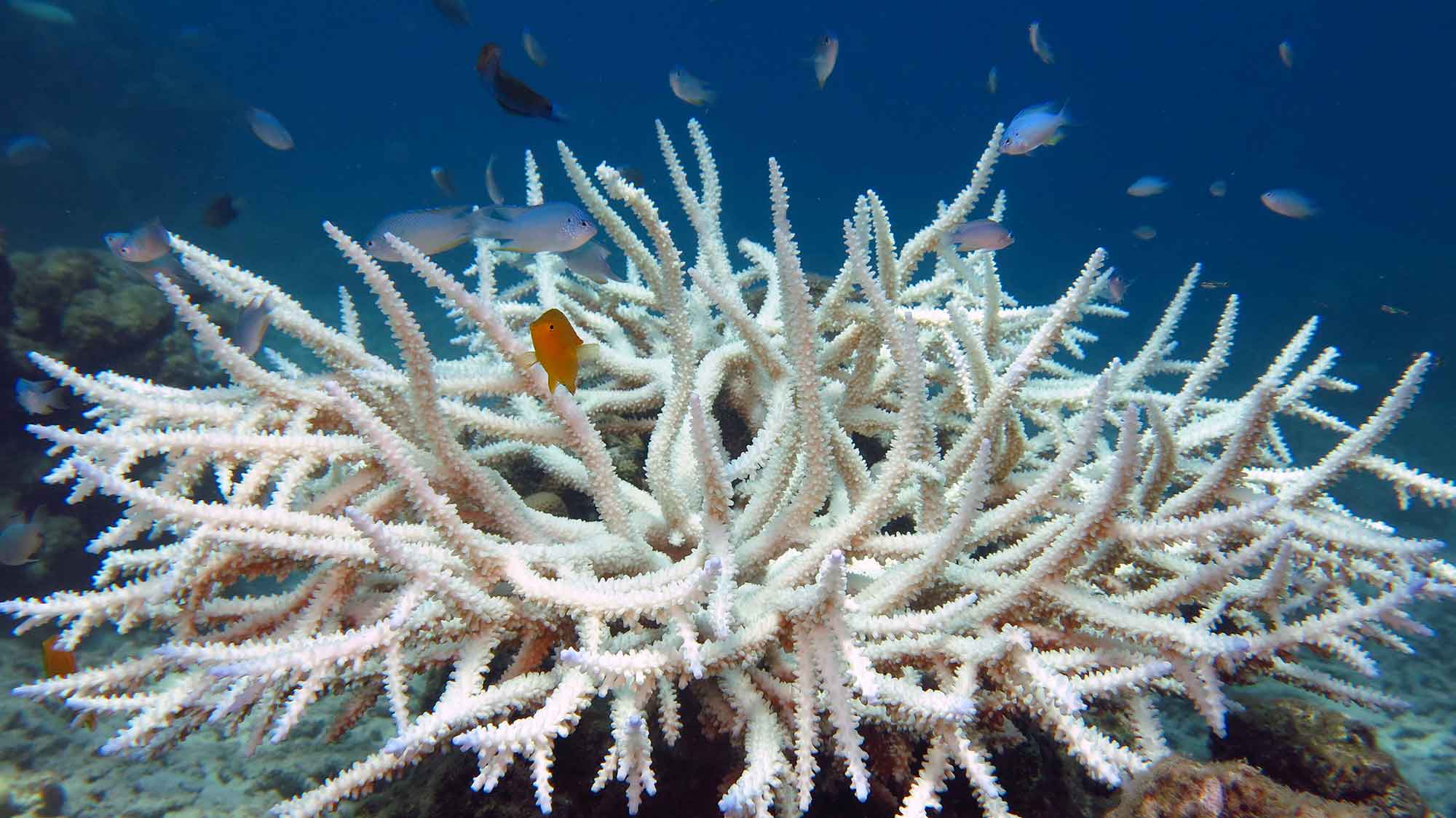
Branching Acropora are a quick-growing species but are also especially susceptible to environmental and anthropogenic pressures. Despite the myriad connections they’ve evolved to dominate lagoons, they all fall short in the face of the biggest threat — global warming. Sustained high ocean surface temperatures cause coral to expel their zooxanthellae, turning the reefs a ghostly white. Eventually, unable to gain the energy they need on their own, the corals die en masse. As much as we may combat local threats, unless we mitigate the effects of climate change, we may soon witness the disappearance of these reefs and all their associated interconnections. Photo: Vardhan Patankar





